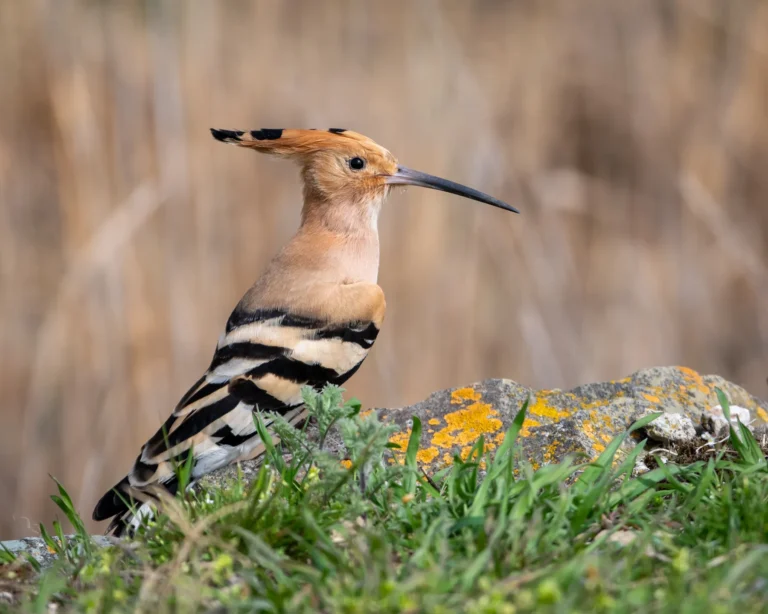
Eurasian hoopoe

Description and how to observe Eurasian hoopoe:
The Eurasian hoopoe has an orange-brown plumage, black-and-white striped wings and a spectacular crest that rises into a fan. It is medium-sized, reaching a length of about 25-29 cm. It is most easily spotted in spring and summer, on meadows, farmland or forest edges in the Danube Delta. The birds attract attention by their distinctive sounds, a repetitive "pu-pu-pu-pu"
What it feeds on Eurasian hoopoe:
The Eurasian hoopoe feed predominantly on insects and larvae, but also eat worms, snails or small reptiles. It uses its long curved beak to forage in the soil or under foliage. It is a natural predator of many agricultural pests, helping to maintain ecological balance.
Threats:
Although it is a relatively common species, the Eurasian hoopoe faces threats such as loss of natural habitats due to deforestation, excessive use of pesticides which reduces food availability and occasional poaching. Protection of the natural areas of the Danube Delta is essential for the conservation of this species.
Ecological role:
More information about Upupa epops:
This fascinating bird is considered a cultural icon in many regions, associated with traditions and legends. In the Danube Delta, the common kestrel is one of the species protected by law, and watching it is a special experience for nature and birdwatching enthusiasts.
Discover now the most beautiful places in the Danube Delta!
In the following pages, you will find detailed information about:
- Top tourist destinations: Traditional villages, nature reserves, tourist trails and much more.
- Activities and attractions: Everything you need to know about boating, fishing, bird watching, cycling and other activities.
- Accommodation and catering: Accommodation to suit all budgets and restaurants serving traditional cuisine.




